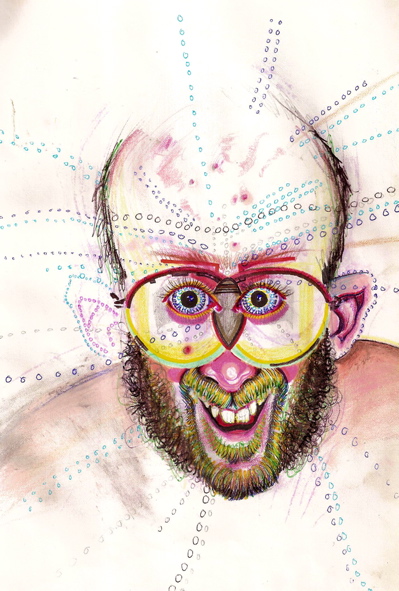By Tom Meeus
Popularity and Your Brain

Whereas the fields of psychology, sociology, and anthropology have extensively studied group dynamics and popularity, neuroscience is barely starting to scratch the surface. Although the role of power in social status has been well-investigated, research into popularity has been minimal. However, recent research by Kevin Ochsner of Columbia University is exploring how likability determines social status within a group. Using previously established social groups (specifically student organizations), Ochsner used individual ratings to determine which students were the most liked among each group. Then, using fMRI, Ochsner measured each students’ brain response to pictures of the other students in the group.
Ochsner found that how much the displayed student was liked correlated with the activity of two brain systems: the emotional evaluation and reward system centering on the ventral striatum, amygdala, and ventromedial prefrontal cortex, and the social cognition system, centering on the temporopariatal junction, precuneus, and dorsomedial prefrontal cortex. The activity of the former could be explained by the brain recognizing previous pleasure from interactions with those who are likable, and anticipating further rewards. The latter could come from the social awareness required to understand and be cognizant of the complexities of social interactions, and how they could be most advantageous.
More
Neuroscience and the Iranian Nuclear Negotiations: An exercise in headline-grabbing
Recently, The Atlantic posted an article relating the growing field of neuroscience to international negotiations, specifically those surrounding the Iranian nuclear negotiations. Co-written by a neuroscientist and an expert in international relations, the article prompted a rather stern and testy response from Christian Jarrett, a science writer for Wired, yet he brings up some excellent points. Before continuing, I urge you to read The Atlantic's article here.
Although it may be well-intentioned, it appears that The Atlantic 's article is little more than an attempt to grab headlines and call more attention to the piece, riding the hype trains of two popular subjects. While it appears that applying concepts from neuroscience to news and international negotiations might be something that can contribute to our understanding, realistically it only serves to dilute the field. At best, it is a misguided attempt at connections between fields. At worst, it is another example of today's journalism: lazy and prone to clickbait.
A Foray into Self-Perception: Altering Self-Image through Drugs
Before reading this post, I want you to take a look at the website of Bryan Lewis Saunders, specifically the portion that describes his escapade through drugs and self-image. It can be found at http://www.bryanlewissaunders.org/drugs/.
As a brief summary, Saunders took one drug a day for several weeks straight, and drew a self-portrait during the experience of each. Eventually, he changed to more sporadic use due to exhaustion and brain damage issues, but he did continue for quite a while. Saunders ranges the gamut from commonly known drugs such as Adderal, bath salts, and cocaine to more obscure Risperdol and Klonopin. The approach was clearly unscientific, it does delve into some interesting questions concerning our self-image, at least once you go past the initial, “this guy is crazy” response. Although I certainly won’t delve into all of them, I think it’s important to sometimes take a moment and ask them.
First of all, it’s interesting to see how much our self-perception can be altered by something so seemingly trivial as a drug. We consider our image to be an integral part of us, yet it is easily changed. For those who study neuroscience, this is probably unsurprising, as we know that drugs change the chemistry of our body and brain, and are thus likely to alter self-image. However, the extent is quite amazing, if Saunder’s pseudo-experiment is any indication.
Enriched Environments: Neuroscience Learns From Poverty
In the last century, treatment of social and learning disabilities has drastically changed. Through the Individuals with Disabilities Education Act, every student who qualifies for special education is entitled to a free and appropriate public education, delivered through an individualized education plan. An 'IEP' is designed through the collaboration of parents, teachers, and special education specialists. The largest category of learning disability is the specific learning disability, of which dyslexia is a typical example.
The amount of care put into special education has drastically changed the lives of many individuals, however, special education excludes those who have a learning disability due to economic situations. This reflects a longstanding social and educational belief that learning disabilities are innate, the result of genetic predisposition and not due to upbringing. The prevailing paradigm did not believe that upbringing could have a significant effect on the development on the brain.
To little surprise, neuroscience is showing otherwise.

Every Student is Entitled to a Free and Appropriate Public Education.
We have always known that acute incidents can have a significant effect on brain development and function (such as in the effects of repeated physical trauma on function), but recent research is suggesting that external factors during development, including many associated with poverty, can have significant, long-term effects. These factors include higher levels of environmental toxins, lower nutritional levels, and increased levels of parental neglect. Recent research suggests that external factors, including poverty, can have significant internal effects on the brain, including brain development and function. Poverty affects the development of the brain in multiple ways, including through poverty-associated factors such as higher environmental toxins, lower nutritional levels, and higher levels of parental neglect. However, the research of Gary Evans and Michelle Schamberg of Cornell University indicates that solely the added stress of low socioeconomic status is responsible for these effects.
Out of Madness Comes Life: Are The Arts Crazy?
Sometimes, writing is tough. The passion isn't there, and every word is a struggle. We've all had those moments when forced to do something artistic or creative, whether it be writing or drawing or playing an instrument (or anything really). We're just not into it, we don’t feel the pulse of the art pounding in our blood. Yet at other times, it’s like our blood rushes in a massive torrential pour, as if it had been held back by a massive dam for a thousand years. Whether its a subject that makes you jump for joy, a song you can head-bang to, or some other Picasso, some things just burst forth in a sudden and fervent explosion of productivity and creativity.

A Tongue Twister: Are Artists' Artistry Artful?
I think we've all had those moments when the pieces all click together, and a piece of work flows from us as easily as a hot knife through butter. During those moments, we feel alive, throbbing with a vibrant energy as our whole being is focused onto a single task. It’s an exhilarating feeling, yet at the same time, when you finally come down out of this strange natural high, it feels as though there was something slightly wrong about that, as if those who are capable of reaching that level often must have something wrong with them.
More
Depression and a Rave Drug: A Tale of Lost Brain Connections
We've all felt down on our luck sometimes. Maybe we didn't do as well on a test as we would have liked, or we argued with one of our close friends, or we didn't get that job we wanted. Maybe all we wanted to do at that moment was climb into bed and wish the world wasn't there.
Yet those moments are fleeting sadness, a minor blip in the grand scheme of things. There's no major brain chemistry changes occurring, unlike in medical depression (major depressive disorder). Despite years of study and investigation, the underlying cause of MDD is still puzzling to many researchers. Nearly all antidepressive medication is based on research done dozens of years ago. Furthermore, most of those drugs take weeks to months to take effect, if they ever take effect at all, making depression one of the most disabling conditions in modern society. More
